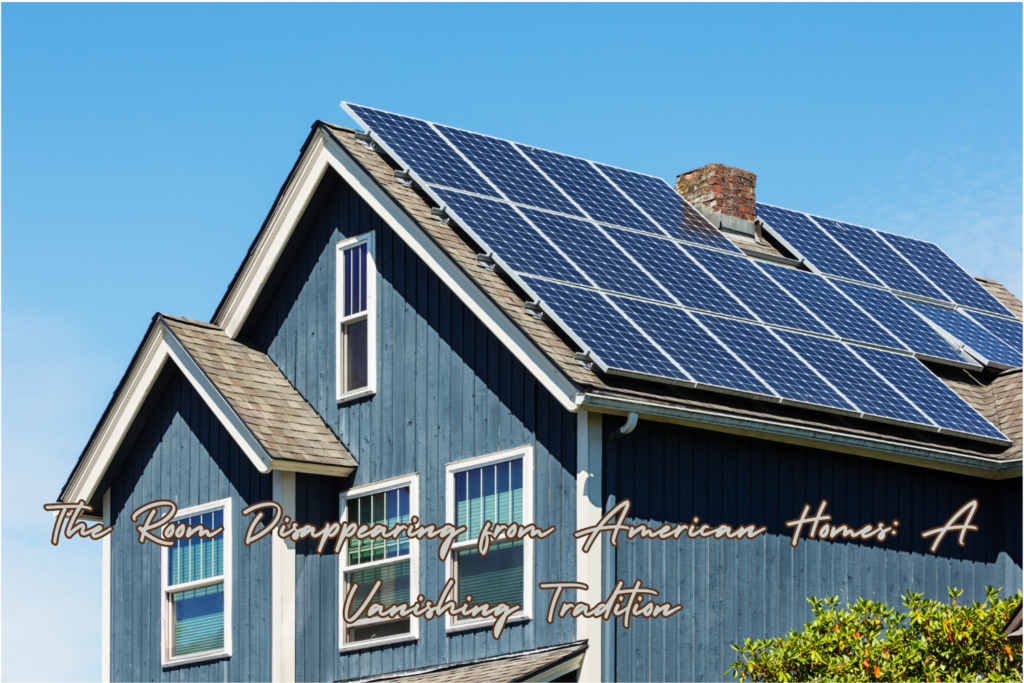As American homes have evolved over the decades, so too have the spaces within them. New trends, changing family dynamics, and technological advancements have all played a role in reshaping how we live and interact within our homes. One of the most striking changes in recent years is the gradual disappearance of a once-essential room: the formal living room. Once a staple in American households, this room is increasingly being reimagined, repurposed, or simply eliminated altogether. This shift reflects broader changes in how we view home design, lifestyle, and the very concept of “living” in our homes.
The Rise of the Formal Living Room
The formal living room has long been a hallmark of American homes, especially during the mid-20th century. This room was typically the most elegant and carefully decorated space in the house, reserved for hosting guests, celebrating special occasions, or simply showcasing the family’s best furniture and decor. It was a place where families would gather to entertain visitors, often reflecting the homeowners’ sense of style and social standing.
In the 1950s and 1960s, the formal living room was a central feature of suburban homes. The post-war economic boom allowed many families to buy larger homes, and the formal living room became a symbol of the American Dream—a space to present your best self to the world.
Changing Lifestyles and Home Design
However, as lifestyles have changed, so too has the way we use our homes. The concept of a formal living room began to feel increasingly outdated as the pace of life quickened and informal, multipurpose spaces became more desirable. The following factors have contributed to the decline of the formal living room:
1. Open Floor Plans
One of the most significant trends in home design over the past few decades has been the move towards open floor plans. Rather than separate rooms for specific purposes, modern homes increasingly favor large, open spaces that can serve multiple functions. The kitchen, dining, and living areas often blend into one another, creating a more casual and interconnected living space. This design trend has made the formal living room, with its rigid boundaries and specific purpose, seem redundant.
2. Casual Living
Today’s families often prioritize comfort and practicality over formality. With busy schedules and a focus on relaxed living, many people prefer spaces that are versatile and conducive to everyday use. The rise of the family room or great room—larger, more informal spaces where families can relax, watch TV, and spend time together—has largely supplanted the need for a separate formal living room. These rooms are designed for comfort and functionality, often incorporating elements like large sofas, entertainment centers, and easy access to the kitchen.
3. Home Offices and Flex Spaces
As the nature of work and home life has changed, the demand for home offices and flexible living spaces has grown. The COVID-19 pandemic accelerated this trend, as more people began working from home and needed dedicated spaces for remote work, homeschooling, and other activities. In many cases, homeowners have repurposed their formal living rooms into home offices, playrooms, or media rooms—spaces that better serve their current needs.
4. Smaller Homes and Urban Living
As urban living has become more popular, and as home sizes have generally decreased, the need to maximize every square foot of living space has become more critical. In smaller homes and apartments, there is often no room for a space that is used infrequently. Homeowners and designers are opting for multifunctional spaces that can adapt to different needs, rather than dedicating a room solely for formal entertaining.
5. Cultural Shifts
Cultural changes have also played a role in the decline of the formal living room. As societal norms have shifted, there is less emphasis on formal entertaining and more focus on casual, laid-back gatherings. The idea of a space that is used only for special occasions feels increasingly out of step with contemporary lifestyles, where people often prefer to socialize in more relaxed environments.
The Future of the Formal Living Room
As the formal living room continues to disappear from American homes, the question arises: Is it gone for good, or is it simply evolving? While it’s clear that the traditional concept of a formal living room is fading, some elements of this space may be reimagined in new ways. Here are a few potential future directions:
1. Blended Spaces
Rather than having a separate formal living room, some homeowners are choosing to blend the formality of traditional living rooms with the functionality of modern family rooms. This might involve incorporating elegant furniture and decor into a more casual setting, creating a space that can serve both formal and informal purposes. For example, a living area might include a statement chandelier or a grand piano, but still be used for everyday activities.
2. Revival of Elegance in Smaller Spaces
In some high-end homes, there is still a desire for spaces that exude elegance and luxury. While the traditional living room might not return in its previous form, elements of formality—such as high-quality finishes, sophisticated design, and artful decor—might find their way into other areas of the home. For example, a small sitting room or library could serve as a modern-day equivalent of the formal living room, offering a space for quiet reflection or intimate gatherings.
3. Multipurpose Rooms
As homeowners continue to seek flexibility in their living spaces, multipurpose rooms that can adapt to various needs are becoming more common. These rooms might combine elements of a living room, home office, and entertainment area, allowing for different uses throughout the day. In this way, the essence of the formal living room—offering a space for gathering and entertaining—can live on in a more versatile form.
4. Outdoor Living Spaces
As outdoor living becomes more popular, some of the functions traditionally served by the formal living room are moving outside. Patios, decks, and outdoor living rooms are increasingly being designed with comfort and style in mind, creating spaces that are perfect for entertaining guests or enjoying a quiet evening at home. These outdoor spaces often blend the formality of traditional living rooms with the casualness of modern lifestyles.
Conclusion:
The formal living room, once a symbol of elegance and tradition in American homes, is gradually disappearing as lifestyles and design preferences evolve. While this space may no longer be a standard feature in most homes, its legacy lives on in new and creative ways. As we continue to adapt our living spaces to better suit our needs, the concept of the formal living room is being reimagined, repurposed, and blended into the fabric of modern home design. Whether through multipurpose rooms, outdoor living spaces, or blended design elements, the essence of the formal living room—creating a space for connection, reflection, and celebration—will continue to influence how we live in our homes for years to come.
FAQs:
1. Why are formal living rooms disappearing from modern homes?
Formal living rooms are disappearing due to changing lifestyles and design trends. Homeowners now prefer open floor plans and multipurpose spaces that cater to casual, everyday living rather than rooms reserved for special occasions. The rise of family rooms, home offices, and smaller living spaces has also contributed to this shift.
2. What are common alternatives to the formal living room?
Common alternatives include family rooms or great rooms, which serve as the central gathering space for the household. Other alternatives include home offices, media rooms, or flex spaces that can adapt to various needs. These spaces are designed for comfort, functionality, and everyday use rather than formal entertaining.
3. Can the formal living room be repurposed?
Yes, many homeowners repurpose formal living rooms to better suit their needs. These rooms can be transformed into home offices, playrooms, libraries, or even guest rooms. The goal is to make the space more functional and aligned with contemporary living.
4. Is the concept of a formal living room completely outdated?
While the traditional formal living room is becoming less common, some elements of formality are still valued in certain homes. These may be incorporated into blended spaces that combine elegance with everyday functionality. In luxury homes, smaller, more intimate spaces like sitting rooms or libraries may take on the role of a formal living room.
5. How can I incorporate formality into a modern living space?
To incorporate formality into a modern living space, consider blending elegant decor with functional design. This might include using high-quality materials, adding statement furniture, or incorporating classic design elements like chandeliers or artwork. The key is to create a space that is both stylish and versatile, suitable for both casual and formal occasions.

